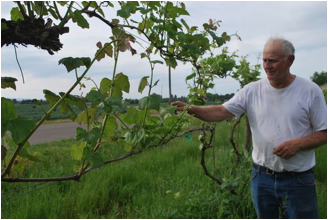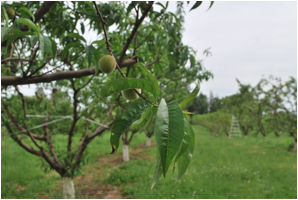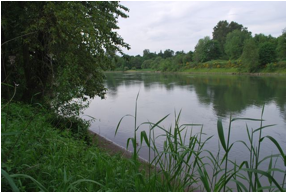Stephens Farm

Chuck and Rachel Stephens have been farming for nearly three decades, maintaining the Stephens family lineage of farmers, in Chuck’s case, and entering into new territory in Rachel’s.
“I grew up in Kansas, where I had only ever heard of three kinds of apples: green, red and yellow. And we didn’t even have them all the time; apples were a special treat.”
When she came to Oregon to support her husband’s farming ambitions and settle on a 120-acre plot on the eastern side of Grand Island, Rachel was introduced not only to numerous apple varieties, but a wealth of fruits and vegetables that the Willamette Valley’s rich soils and mild climate make possible.
“Out here, it’s like you can eat anything.”

They bought their property in 1985, which was, at the time, “all weeds and grass” and a healthy stand of cottonwood trees. The site is separated by elevation into two sections: one barely above the Willamette River, which it borders for a third of a mile of riverfront, and another atop a ridge, where they built their home. Although Chuck cleared the lower 80-acres of cottonwood trees in their first two years on the farm, he now leases that field to a neighboring farmer and keeps the majority of his own crops in the upper 40-acres, where the land dries out quickly and is more protected from flooding.
There, Chuck has planted an Eden of fruits and vegetables, constantly tweaking his preferred varieties to meet market demand and feel out his own product niche. When he started, Chuck filled much of his plantable land with apple trees, a solid commodity crop at the time. A few years later, the apple market crashed following a 60-Minutes report that a ripening agent used on red apples was a known carcinogen. After selling box after box of apples below his breakeven point, Chuck decided to rip out most of his trees and diversify his operation.

His fields now host a mind-boggling array of edibles: meandering orchards of peaches, pears, apples, plums, nectarines, apricots and cherries are interplanted with blueberries, grapes, strawberries and vegetable rows that he sows as soon as possible each spring to insure early harvests.
The soils of Grand Island are rich and well-draining, an unusual combination in our region that allows Chuck to begin tilling and planting while farmers in other areas are still waiting for the soil to dry.

Outlying areas of the farm are planted in figs, an experimental crop that has proven lucrative for Stephens, and a few trial almond trees along the riverbank. Nearly every available nook and cranny of the farm is host to some sort of enterprising vegetation, a concert of florae conducted by a man who is the poster child for not putting all his eggs in one basket.
Each crop has its year, Chuck explained, and you just have to go with the flow. And while he’s learned and embraced that philosophy the hard way, his entrepreneurial spirit has helped him build a buffer of resiliency amidst the high-stakes nature of farming. When he hears about an intriguing new variety, he buys a few and tries it, which is how he has amassed a collection of 10-25 varieties of each crop he grows. Such diversity also helps to extend harvests throughout the season.

The Stephens’ endless optimism keeps their farm charging forward, seeking out the next revenue stream while many of their contemporaries settle into retirement. Chuck doesn’t seem like he’ll stop any time soon, with a new greenhouse under construction, new fruit trees planted that won’t produce for a few years yet, and talk of initiating an agritourism arm of the business. Given how energized he is by his farm, setting up a vacation rental that markets its bucolic setting and riverfront beaches may be as close to retirement as Chuck wants to get.
Look for extended harvests of strawberries, tree fruits, grapes, figs, root vegetables, corn and more at the Stephens Farm booth throughout the summer season; try all the varieties and find your favorite!